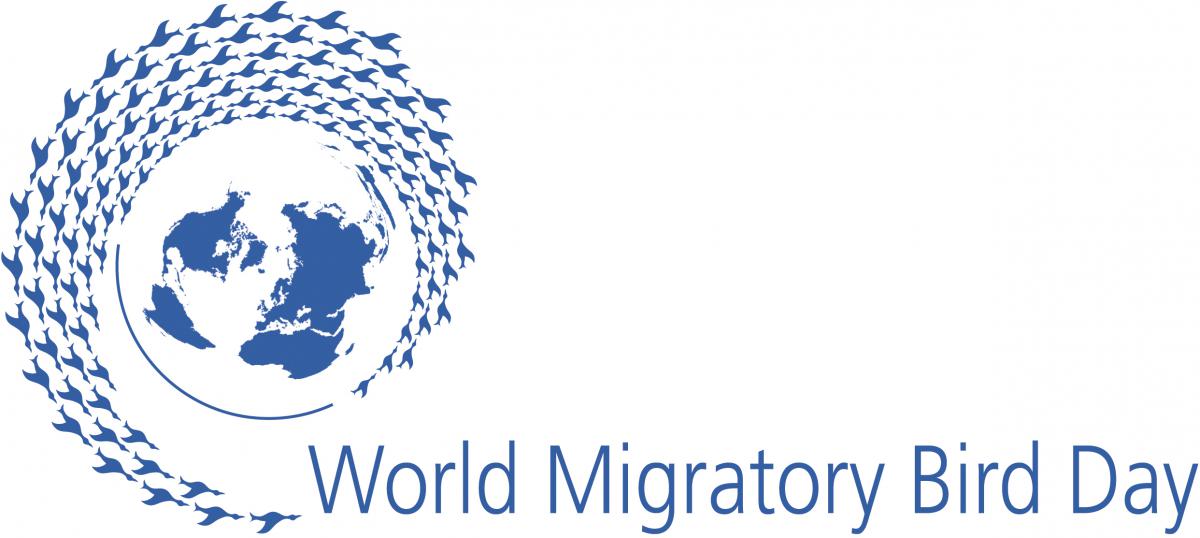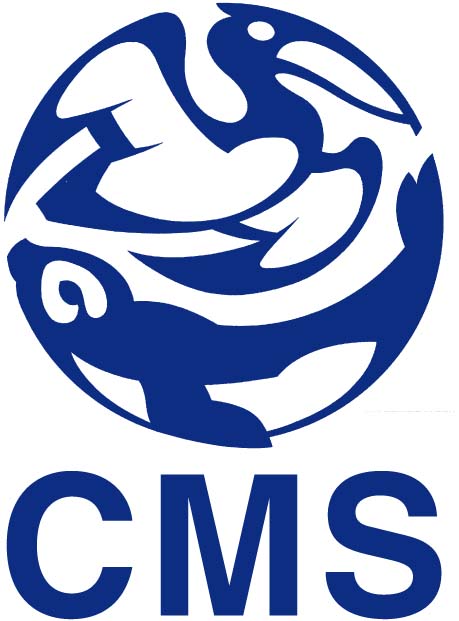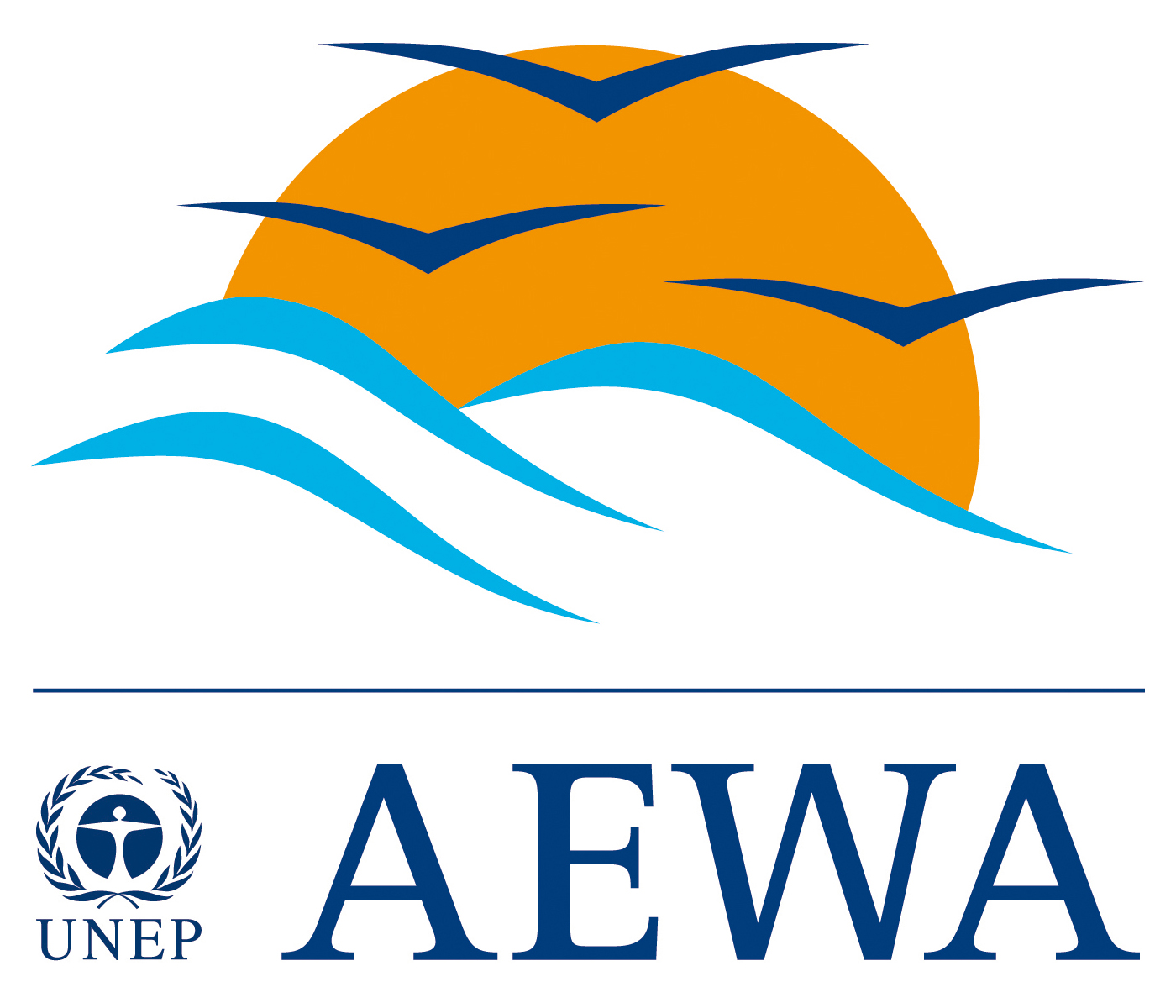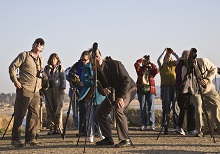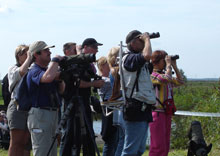You are here
Resources
The WMBD 2022 poster is also available in several other (Asian) languages, which can be downloaded from here.
Slogan
| ENGLISH | Dim the Lights for Birds at Night! | ARABIC | أخفت األضواء ليًال لمساعدة الطيور المهاجرة |
| FRENCH | Des nuits noires pour les vols migratoires ! | CHINESE | 熄灯,让候⻦安全回家 |
| SPANISH | ¡Noches oscuras, migraciones seguras! | PORTUGUESE | Noites escuras, migrações seguras! |
| RUSSIAN | Притуши огни ради птиц в ночи! | KISWAHILI | Punguzia ndege mwangaza usiku! |
Key Messages
-
Light pollution is increasing globally. The amount of artificial light on the earth’s surface is increasing by at least 2 percent each year and could be much greater.
-
Each year, light pollution contributes to the death of millions of birds from collisions. Excessive artificial light at night can disorient birds during their migration, leading to fatal collisions with illuminated buildings, communication towers, and other brightly lit structures.
-
Light pollution can cause other adverse effects on migratory birds. It can alter birds’behaviours, including migration, foraging and vocal communication. It affects their activity levels and energy expenditure and causes disorientation when they fly at night. Artificial light at night can impact the timing of migration and other seasonal behaviours influenced by the disruption of birds’ biological clocks. Migration routes can be affected by artificial light at night through birds being attracted to light, or conversely through aversion.
-
An enormous diversity of birds, active both nocturnally and diurnally, experience impacts of light pollution. Many nocturnally migrating birds such as ducks, geese, plovers, sandpipers and songbirds of all kinds are affected by light pollution. Seabirds such as petrels and shearwaters commonly get drawn into hazardous situations on land and on ships by artificial light sources.
-
Solutions to address impacts of light pollution are readily available. Numerous governments, cities, companies and communities around the world are already taking steps to address light pollution.
-
Internationally agreed guidelines on light pollution covering marine turtles, seabirds and migratory shorebirds already exist and have been endorsed by the Parties to the Convention on Migratory Species (CMS). These include six simple management principles which can be used to reduce light pollution.
-
New international guidelines focusing on migratory land birds and bats are currently being developed under CMS. The new guidelines will be presented to CMS Parties for adoption at the 14th Conference of the Parties to CMS in 2023.
-
Natural darkness has conservation value in the same way as clean water, air and soil, and should be protected.
Journal Articles on Migratory Birds and Light Pollution
- "Light pollution increasing year round for some migrating birds."
- "Artificially lit surface of Earth at night increasing in radiance and extent."
- "Ecological light pollution - Longcore - 2004 - ESA Journals." 1 May. 2004,
- "Artificial light at night confounds broad‐scale habitat use by ...." 9 Jan. 2018,
- "Light pollution is greatest within migration passage areas ... - Nature." 6 Feb. 2018,
- "Abrupt switch to migratory night flight in a wild migratory songbird." 26 Sep. 2016,
- "A plea for a worldwide development of dark infrastructure for ...."
- "Migrating Songbirds Recalibrate Their Magnetic Compass ... - Science."
- "The influence of artificial light at night and polarized light on bird ..."
- "Drivers of fatal bird collisions in an urban center - PNAS." 7 Jun. 2021,
Media Articles on Migratory Birds and Light Pollution:
- "What is glare? | Light Pollution | Lighting Answers | NLPIP - Lighting
- How can sky glow be reduced? | Light Pollution
- What is light trespass? | Light Pollution | Lighting Answers | NLPIP.
- Light Pollution - International Dark-Sky Association
- Is Bird Migration Getting More Dangerous? 1 Apr. 2021,
- Cities can help migrating birds on their way by planting more trees and turning lights off at night 15 Jan. 2021,
- Lights Out - BirdCast.
- Nearly 3 Billion Birds Gone - Cornell Lab of Ornithology
World Migratory Bird Day Videos

Logos
Please note: The World Migratory Bird Day logo and poster can be downloaded here in various formats. We strongly encourage you to incorporate these in your WMBD messages, activities and information materials. They can be used free of charge and have been produced for the sole purpose of spreading the news about WMBD!
World Migratory Bird Day Event Photos
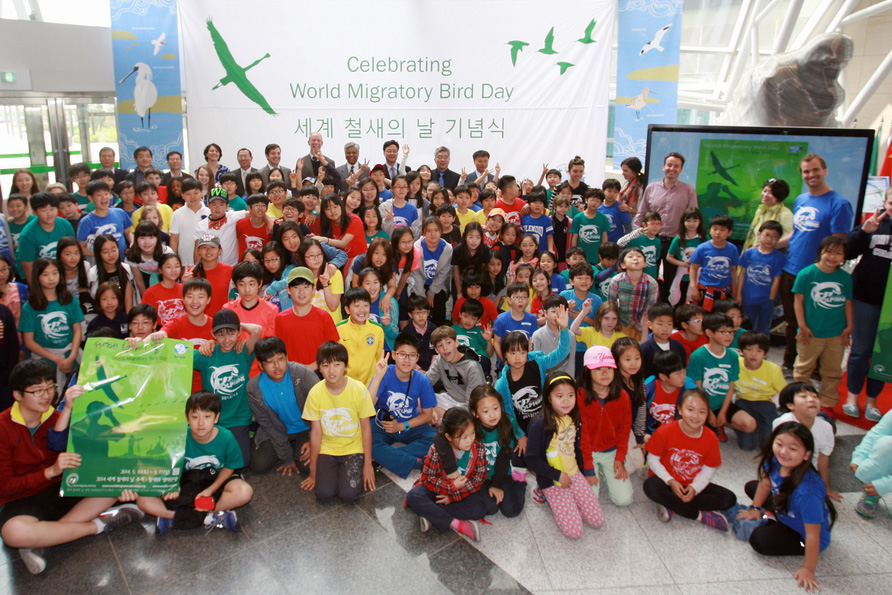
World Migratory Bird Day Event Photos can be viewed on the WMBD Flickr account. Share your event photos, event reports and local WMBD news articles with the global WMBD community! Learn how to instantly upload them here.
Royalty Free Photos
 White Pelican (Pelecanus onocrotalus)
White Pelican (Pelecanus onocrotalus)
© Sergey Dereliev (UNEP/AEWA) [website]
Download the picture as: JPG [146 kB]
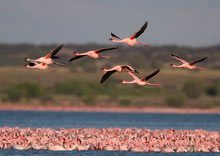 Lesser Flamingo (Phoeniconaias minor)
Lesser Flamingo (Phoeniconaias minor)
© Mark Anderson
Download the picture as: JPG [146 kB]
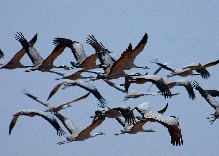 Migratory Birds in Flight - Common Cranes © Jussi Mononen
Migratory Birds in Flight - Common Cranes © Jussi Mononen
Download the picture as: JPG [146 kB]
Spoon-billed Sandpiper
© Smith Sutibut
Download the picture as: JPG [419 kB]
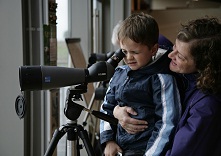 Migratory Birds and Culture: Bird Watchers
Migratory Birds and Culture: Bird Watchers
© Andy Hay
Download the picture as: JPG [526 kB]
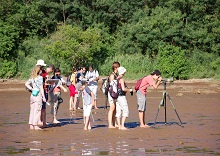 New Caledonia
New Caledonia
© Jerome Spaggiari
Download the picture as: JPG [419 kB]
© Sergey Dereliev (UNEP/AEWA)
Download the picture as: JPG [419 kB]
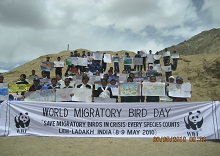 WMBD 2010 event in Leh, Ladakh, India
WMBD 2010 event in Leh, Ladakh, India
© WWF
Download the picture as: JPG [170 kB]
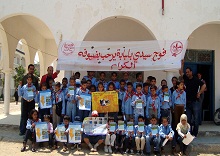 WMBD 2009 event in Gabes, Tunisia
WMBD 2009 event in Gabes, Tunisia
© Naoufel Hammouda/AAO
Download the picture as: JPG [409 kB]
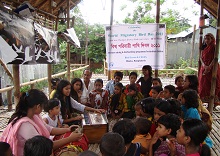 WMBD 2011 event in Bangladesh
WMBD 2011 event in Bangladesh
@ Dhaka Sourav
Download the picture as: JPG [162 kB]
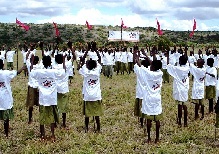 First WMBD in Kenya, 2006
First WMBD in Kenya, 2006
© Catherine Lehmann
Download the picture as: JPG [402 kB]
Note to the photos: Because we want to be 100% certain that the photos we offer on this page are royalty free, we chose to offer the ones above. However, if you would like to donate your pictures for use in the context of future WMBD campaigns please contact us.
Do you have ideas for improvements? This is where we need you! Please contribute to the WMBD Website or give us feedback.







